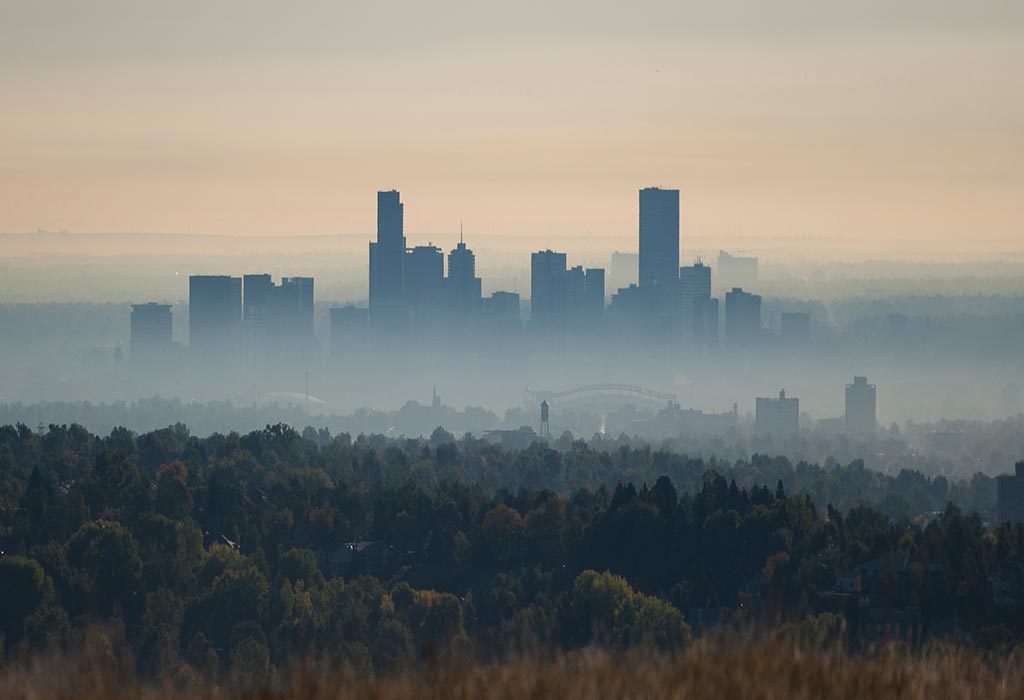 Terpenes make your herb smell good, but researchers are postulating that those organic particles that titillate your nostrils may also bind with particulate matter from hydrocarbon emissions to worsen smog. A Colorado study is now putting this to the test—but with no help from the EPA, due to cannabis’ outlaw status under federal law.
Terpenes make your herb smell good, but researchers are postulating that those organic particles that titillate your nostrils may also bind with particulate matter from hydrocarbon emissions to worsen smog. A Colorado study is now putting this to the test—but with no help from the EPA, due to cannabis’ outlaw status under federal law.
As a legal cannabis industry expands, there is growing concern about its environmental impacts. And with federal overseers restricted by law from even funding research, much less regulating, the scientific community has had to respond independently of the government. One matter now under study is how volatile organic compounds (VOCs) emitted by potent strains could be contributing to air pollution.
The terpene-ozone connection
Atmospheric scientist William Vizuete this week spoke to Science magazine about how he and his team grew the dozen cannabis plants permitted per household under Colorado law in a garage in Boulder. But the University of North Carolina researcher and his colleagues weren't interested in smoking. Rather, they sought to measure the VOCs released into the air as the plants grew. The varieties they chose to study were Lemon Wheel, Elephant Purple, and Rockstar Kush.
The results were just published in the journal Atmospheric Environment, and they suggest that the more than 600 indoor legal grows in Denver could be worsening the city's air pollution problem.
Scientists have long been aware that VOCs emitted by plants can contribute to smog formation—and terpenes are powerful VOCs. They can mix with nitrogen oxides—emitted by cars and industrial sources—in sunlight-driven reactions that produce ground-level ozone. Vizuete's study raises the possibility that the tens of thousands of plants in Denver's indoor grows—largely situated along two busy highways—could in a worst-case scenario double the city's output of smog-forming VOCs.
A story in Pacific Standard magazine last year on the social impacts of Denver's fast-expanding cannabis industry also noted that most of the big commercial grows are clustered along the city's two major traffic arteries—I-25 and I-70.
If the pot farms "are putting out a significant amount of terpenes, there is not a worse place to put them," Vizuete told Science. "If I was designing an ozone reactor, this is what I'd do."
EPA drops the ball
Denver's air pollution problem is a serious one. Local environmental group Wild Earth Guardians just announced its intention to sue the EPA for allowing the Denver Metro-North Front Range Area of Colorado to be out of compliance with the 2008 National Ambient Air Quality Standards (NAAQS) past the deadline of July 20, 2018. The NAAQS were established under the authority of the 1970 Clean Air Act, which means the EPA is failing to enforce a major federal environmental statute, the group charged. And ozone is particularly at issue.
And where the terpene-smog connection is concerned, the EPA won't even look at the question—because of the illegality of cannabis under federal law. Vizuete had to work in a garage because cannabis plants aren't allowed into Boulder's federally funded National Center for Atmospheric Research, where he had initially hoped to run the study. He told Science that researchers who want to study cannabis "are stuck in a position where we have to cobble this together on our own."
The state, fortunately, is taking up some of the slack. A more far-reaching study of the actual Denver-area cultivation sites and their possible impact on air quality is about to be undertaken by Kaitlin Urso of the Air Pollution Control Division at the Colorado Department of Public Health and Environment. "EPA has left us holding the bag," Urso told Science.
Vizuete last year co-authored an opinion piece, published by the journal Environmental Science and Technology, calling on the EPA and other federal agencies to fund studies on state-legal cannabis cultivation. Entitled "High Time to Assess the Environmental Impacts of Cannabis Cultivation," the editorial also made note of the better-understood question of indoor cultivation's massive carbon footprint. This is a particular concern in Colorado, where indoor cultivation is the only kind that's allowed.
But in California too, even outdoor cultivation takes a toll—for instance, in groundwater depletion. And as long as the EPA remains intransigent on extending oversight, it is all the more important that independent researchers, state authorities and (above all) consumers bring pressure to bear for a responsible industry.
Cross-post to Cannabis Now
Graphic: Wild Earth Guardians
Follow @GlobalGanjaRpt







Recent comments
5 days 21 hours ago
1 week 5 days ago
5 weeks 5 days ago
9 weeks 3 days ago
13 weeks 4 days ago
14 weeks 2 days ago
24 weeks 2 days ago
28 weeks 2 days ago
29 weeks 3 days ago
29 weeks 3 days ago